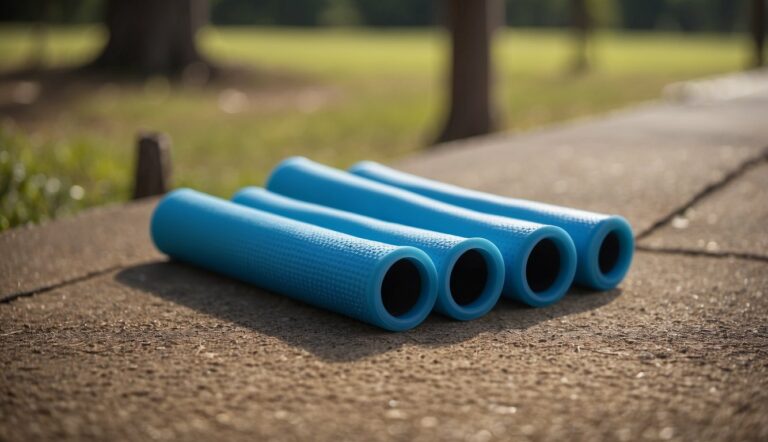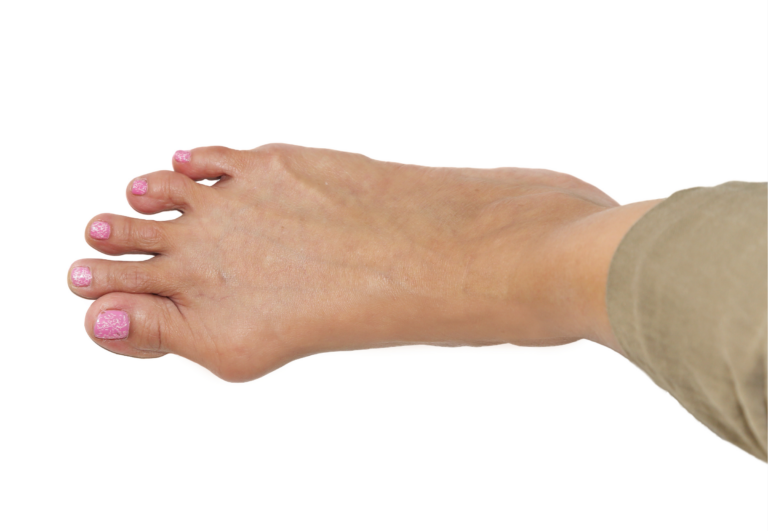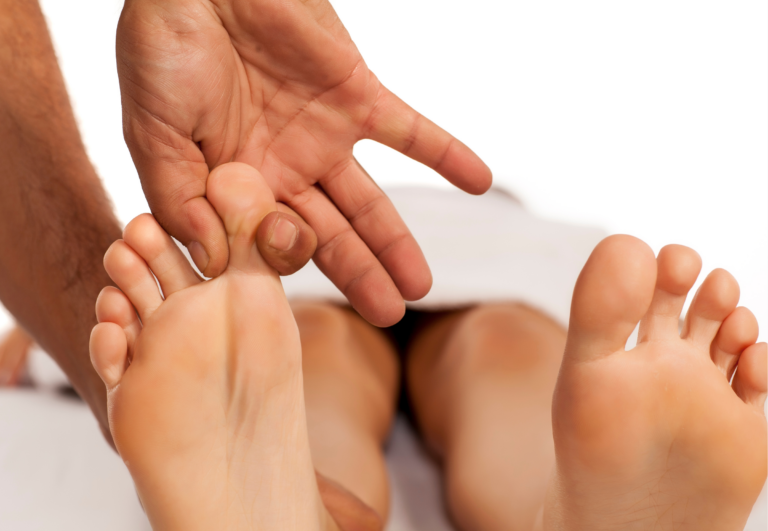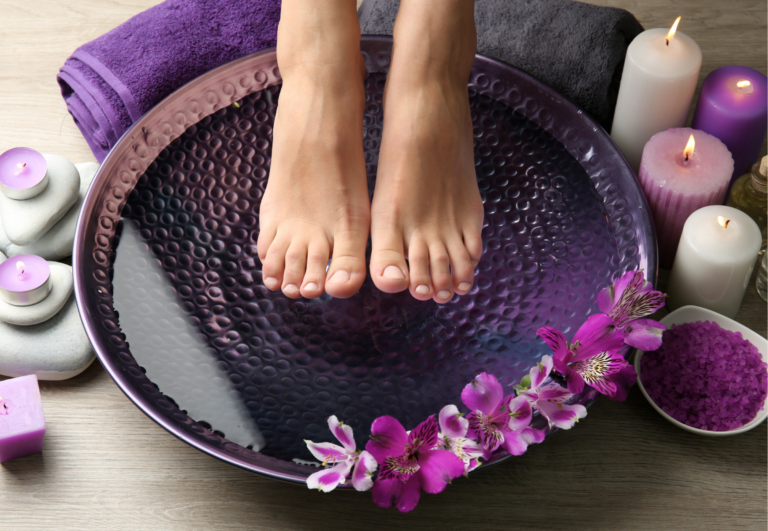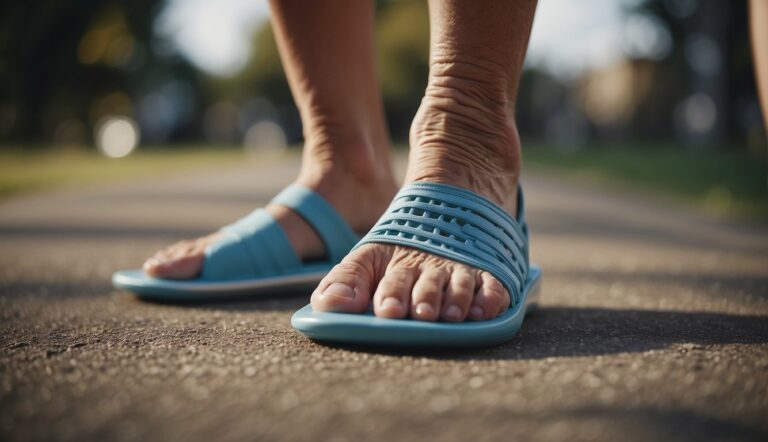Toe Spacer Stretches: Enhance Your Foot Mobility and Flexibility
Toe spacer stretches can be transformative for foot health. The use of toe spacers, those unassuming but powerful little tools, aids in the realignment and strengthening of toes. Having incorporated toe spacers into my routine, I’ve observed firsthand how they address issues like toe crowding and upward bending, stemming from constrictive footwear or foot structure problems.
Employing toe spacers not only enhances foot flexibility but also fosters overall balance. I recommend them as an essential part of foot care, especially for those experiencing discomfort or seeking to maintain robust foot health. This simple practice of inserting spacers between the toes gently pushes them apart, counteracting the frequent compression caused by narrow shoes or extensive periods spent on one’s feet.
As someone who values the comfort and agility of their feet, integrating toe spacers into regular stretching has proven beneficial. The stretches can be easily done at home, providing relief from foot pain and improving toe alignment. For anyone curious about enhancing their foot wellness, toe spacer stretches can be a rewarding addition to their daily routine.
Toe Spacer Stretches – a Step-by-Step Routine
Incorporating toe spacers into your stretching routine can help improve toe alignment, increase flexibility, and strengthen the muscles of your feet.
Here’s a step-by-step routine for toe spacer stretches:
- Toe Splay Stretch:
- Begin seated or standing with the toe spacers inserted between each toe.
- Relax your feet and allow the spacers to gently push your toes apart.
- Hold this passive stretch for 2-3 minutes to help increase the space between your toes.
- Big Toe Extension Stretch:
- While seated, cross one leg over the other and place the toe spacers between your toes.
- Gently pull the big toe upwards, stretching the underside of the toe and the arch of the foot.
- Hold the stretch for 15-30 seconds, then release.
- Repeat 2-3 times on each foot.
- Toe Flexor Stretch:
- Sit with your legs extended in front of you and toe spacers in place.
- Lean forward and reach for your toes, pulling them gently back toward your body.
- Hold the stretch for 15-30 seconds, feeling a stretch along the bottom of your foot and toes.
- Release and repeat 2-3 times.
- Toe Abductor Stretch:
- With the toe spacers on, stand or sit with your feet flat on the ground.
- Press your toes down and try to spread them apart actively against the resistance of the spacers.
- Hold the active stretch for 5-10 seconds, then relax.
- Perform 10-15 repetitions to strengthen the muscles that control toe abduction.
- Plantar Fascia Stretch:
- While seated, cross one ankle over the opposite knee with toe spacers in place.
- Use your hand to massage and stretch the bottom of your foot, applying gentle pressure along the plantar fascia.
- Continue for 1-2 minutes on each foot.
- Hammer Toe Stretch:
- Insert the toe spacers and focus on the affected toe, if applicable.
- Gently press down on the raised part of the toe to encourage it to straighten.
- Hold the stretch for 15-30 seconds, then release.
- Repeat 2-3 times for each affected toe.
- Toe Adductor Stretch:
- With toe spacers on, place your hands on the outside of your feet.
- Gently press your hands inward to create resistance as you try to squeeze your toes together.
- Hold for 5-10 seconds, then relax.
- Perform 10-15 repetitions to work on the adductor muscles of the toes.
- Cool Down:
- After completing your stretches, remove the toe spacers and give your toes a gentle wiggle to relax them.
- You can also perform a light foot massage to enhance circulation and relaxation.
Remember to perform these stretches gently and without forcing your toes into painful positions. Consistency is key, so aim to incorporate these stretches into your routine several times a week. If you have any specific foot conditions or experience pain during these stretches, it’s advisable to consult with a healthcare professional for personalized guidance.
Toe Spacer Overview
Toe spacers, commonly known as toe separators, play an essential role in promoting foot health. These devices, when used effectively, can improve foot aesthetics, alleviate pain, correct deformities, and enhance overall foot function.

The Role of Toe Spacers in Foot Health
Toe spacers are designed to realign the toes to their natural position, which I’ve found beneficial in reducing foot pain and addressing common foot problems. The relief comes from distributing body weight evenly across the foot.
Plantar fasciitis, a typical ailment, is one where toe spacers can assist by preventing toes from clumping together, thereby reducing strain on the plantar fascia. For those with bunions or hammertoes, toe spacers can prevent or correct the overlapping or bending of toes, offering a non-invasive solution to improve foot structure and health.
List of Toe Spacer Benefits for Foot Health:
- Reducing pressure and pain from deformities
- Enhancing foot balance and posture
- Preventing toe overlapping
- Straightening bent toes
- Strengthening intrinsic foot muscles
Material and Design Variations
In my experience, toe spacers are commonly crafted from silicone or gel materials. Both options are usually hypoallergenic and malleable, allowing for a comfortable fit. The silicone is typically medical-grade, offering a combination of firmness and flexibility that is unique compared to traditional gel-based spacers. The design can range from individual toe spacers that fit between two toes to full-foot models that cover all the toes. Additionally, the level of firmness can vary, influencing the degree of correction and comfort experienced during use.
Table of Toe Spacer Materials:
| Material | Features | Common Use Cases |
|---|---|---|
| Silicone | Firm, flexible, hypoallergenic | Corrective alignment |
| Medical-grade Gel | Soft, cushioning, comfortable | Pain relief, daily wear |
| Rubber | Durable, less flexible | High-stress activities |
Each type of material has advantages, and the best choice often depends on the individual’s needs and preferences. It is essential to choose toe spacers that are washable and durable for long-term use.
Benefits of Toe Spacer Stretches
Toe spacers are utilized to improve foot health, targeting pain relief, balance, and stability. They offer a simple approach to enhancing the strength and mobility of your feet. By realigning your toes, they set a firm foundation for preventing common toe deformities.
Pain Relief and Recovery
I find that toe spacers provide significant pain relief for ailments such as bunions and plantar fasciitis. They aid in the recovery process by reducing inflammation and improving blood circulation, which can help alleviate foot fatigue and discomfort associated with these conditions.
Improving Balance and Stability
When I use toe spacers, I notice an improvement in my balance and stability. They encourage a more natural toe spread, which enhances the body’s ability to distribute weight evenly. This is crucial not just for athletic performance but also for everyday activities.
Enhancing Foot Strength and Mobility
Regular use of toe spacers has been shown to strengthen the intrinsic muscles of the foot. By activating and stretching these muscles, toe spacers contribute to overall foot strength and mobility. This can lead to better foot function and flexibility.
Alignment and Prevention of Toe Deformities
Toe spacers play a key role in maintaining proper toe alignment. They work by spacing the toes and preventing them from overlapping, thus helping to realign the toes and ward off deformities such as hallux valgus. By doing so, they can contribute to the prevention of further toe complications.
Specific Conditions and Targeted Stretches
Toe spacers are valuable for addressing conditions such as bunions and hammertoe and for athletic individuals interested in proactive foot care. The goal is to improve flexibility, reduce pain, and aid in recovery without surgical interventions.
Managing Bunions and Other Toe Conditions
I’ve found that routinely using toe spacers can make a significant difference for those suffering from bunions and hammertoes. These conditions often cause overlapping of the toes, leading to discomfort and foot pain. Here are some targeted stretches and non-surgical interventions:
- Toe Separation: For bunions and overlapping toes, insert toe spacers for several minutes a day to gently realign the toes and reduce pressure.
- Resistance Stretching: Using a rubber band or similar resistance tool around the big toe and pulling outward counteracts the inward pressure of bunions.
- Splint Support: At night, splints can be used in conjunction with spacers to maintain proper alignment and ease discomfort.
Stretches for Athletes and Active Individuals
Athletes and active individuals often experience foot issues due to repetitive stress and the need for quick recovery to maintain their performance levels. Here’s how toe spacers can be incorporated into a recovery routine:
- Daily Stretch Routine: After high-impact activities, use toe spacers to relieve foot pain by stretching toe muscles and reducing the risk of hammertoes.
- Post-Workout Care: Immediately following exercise, placing toe spacers can enhance blood circulation, promoting faster recovery and reducing pain.
- Preventative Measures: Regular use of toe spacers may prevent the development of conditions like bunions and hammertoes by ensuring proper toe alignment.
The stretches and uses listed aim to improve foot health and should be considered a supplement to, not a replacement for, professional medical advice.
Choosing the Right Toe Spacers
When selecting toe spacers, the two main elements I consider crucial are the fit and the endorsement from foot specialists. These toe tools come in various designs and materials, so finding the optimal match is essential for both comfort and functionality.
Factors to Consider for Optimal Fit
- Size: Toe spacers like Correct Toes come in different sizes. It’s essential to match the size of the spacers to your feet for a snug, yet comfortable fit.
- Material: Look for spacers made from soft, pliable materials such as silicone, which adapt to the contours of your toes.
- Design: The design should accommodate the natural spread of your toes without exerting excessive pressure. Brands like Yoga Toes and Mind Bodhi offer ergonomic designs that promote this natural alignment.
Compatibility with Footwear: Check to ensure the toe spacers can be worn comfortably with your day-to-day shoes, especially if you tend to wear tight footwear, as spacers require extra room to work correctly.
Recommendations from Podiatrists
Podiatrist-Recommended: Seek out products recommended by podiatrists, which indicate a professional endorsement of their effectiveness and safety.
Product Choices:
- Correct Toes Toe Spacers — Widely recognized for their anatomical design.
- Yoga Toes — Renowned for aiding in toe stretching during relaxation.
- PediFix — Known for its targeted toe separation solutions.
Price Consideration: While not the only metric, price can signify quality; however, ensure it reflects the product’s value and effectiveness for your specific needs.
Usage Tips and Best Practices
Toe spacers, like Yogatoes and gel toe separators, are great tools for maintaining foot health. Here are effective strategies to ensure you’re getting the most out of these devices.
Proper Cleaning and Care
Cleaning your toe spacers is crucial for hygiene and product longevity. Most toe spacers, especially those made of medical-grade materials, are easy to clean.
- After actively using them, wash with mild soap and water.
- Allow them to air dry or gently wipe them down with a soft cloth.
- Storage should be in a cool, dry place to avoid deterioration of the material.
Routine for Maximum Benefits
To reap maximum benefits, integrate the use of toe spacers into your daily routine. A balanced routine can enhance foot alignment and relieve pain:
- Start with a few minutes a day and gradually increase the duration.
- Use them during sedentary activities, like watching TV or reading.
- For active use, consider foot stretches or exercises that are compatible with the spacings.
Using toe spacers should feel comfortable. If you experience pain or discomfort, reduce the duration of use and consult a foot specialist if necessary.
Beyond Stretching: Comprehensive Toe Spacer Use
Toe spacers are more than just a tool for stretching; they serve as a foundational element in an overarching footcare strategy.
Incorporating into Daily Activities
I’ve found integrating toe spacers into my daily routine to be incredibly effective. Simple activities like walking around the home, doing light chores, or while relaxing can be enhanced with toe spacers. Here’s a list of common activities during which toe spacers can be used:
- Household chores: Incorporate them during casual movements.
- Working from home: Wear them when seated at a desk.
- Relaxation time: Utilize them while reading or watching TV.
Pairing toe spacers with toe socks can also help maintain proper toe alignment throughout the day.
Long-term Use and Footcare Regime
For long-term benefits, consistency is key. Toe spacers should be integrated into a daily footcare routine that supports overall foot health. Over extended periods, this consistent use can potentially correct deformities and enhance foot strength. A typical long-term footcare plan includes:
- Night splints: for extended stretching during sleep,
- Insoles: supportive when wearing shoes, and
- Regular foot exercises: to strengthen foot muscles.
I also recommend alternating periods of toe spacer use with various supportive footwear options to avoid reliance on any single practice. Regular evaluation of foot health is essential to adjust the care regime accordingly.
